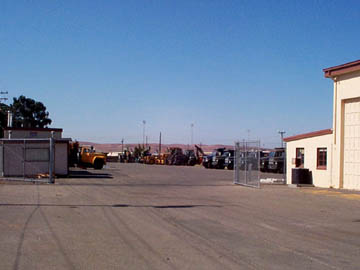
Site SD036 consists of Buildings 872, 873, and 876 as well as several paved areas in an active industrial portion of the base. Buildings 872, 873, and 876 were built as multiple use shops in 1953, which included a wash rack and an oil/water separator. Current uses of these facilities include paint shops, electrical shops, and landscape maintenance. The primary groundwater contaminants are dichloroethene, trichloroethene, and vinyl chloride that may be a source of potential human health risks. Groundwater contamination at Site SD036 is commingled with neighboring sites, resulting in a large solvent plume within the West Industrial Operable Unit area. TPH is the only soil chemical of concern.
Based on human health and ecological assessments of the potential risks posed by the contaminants, the Travis AFB Groundwater Record of Decision selected a combination of Emulsified Vegetable Oil (EVO) injections in the portion of the plume with the highest contaminant concentrations and Enhanced Attenuation for the downgradient portion of the plume. The EVO serves as a food source for microbes that create the conditions needed for reductive dechlorination to take place. The groundwater remedy was installed in 2015, and monitoring of the final groundwater remedy is ongoing. The North/East/West Industrial Operable Unit Soil, Sediment, and Surface Water Record of Decision selected No Action for the soil at this site.
In 2016, the base initiated a multi-site technology demonstration at Sites SD036 and ST027B that will compare first-order degradation rates of chlorinated solvents in locations receiving (1) EVO-only injections and (2) EVO injections with a bioaugmentation culture. This technology demonstration will be performed over a period of about three years and is expected to end by 2019.